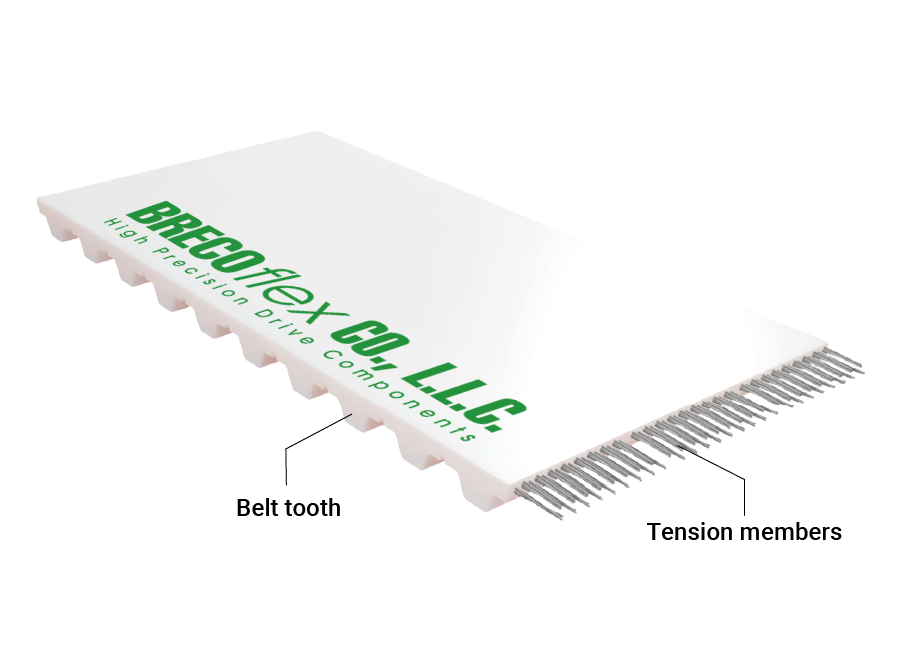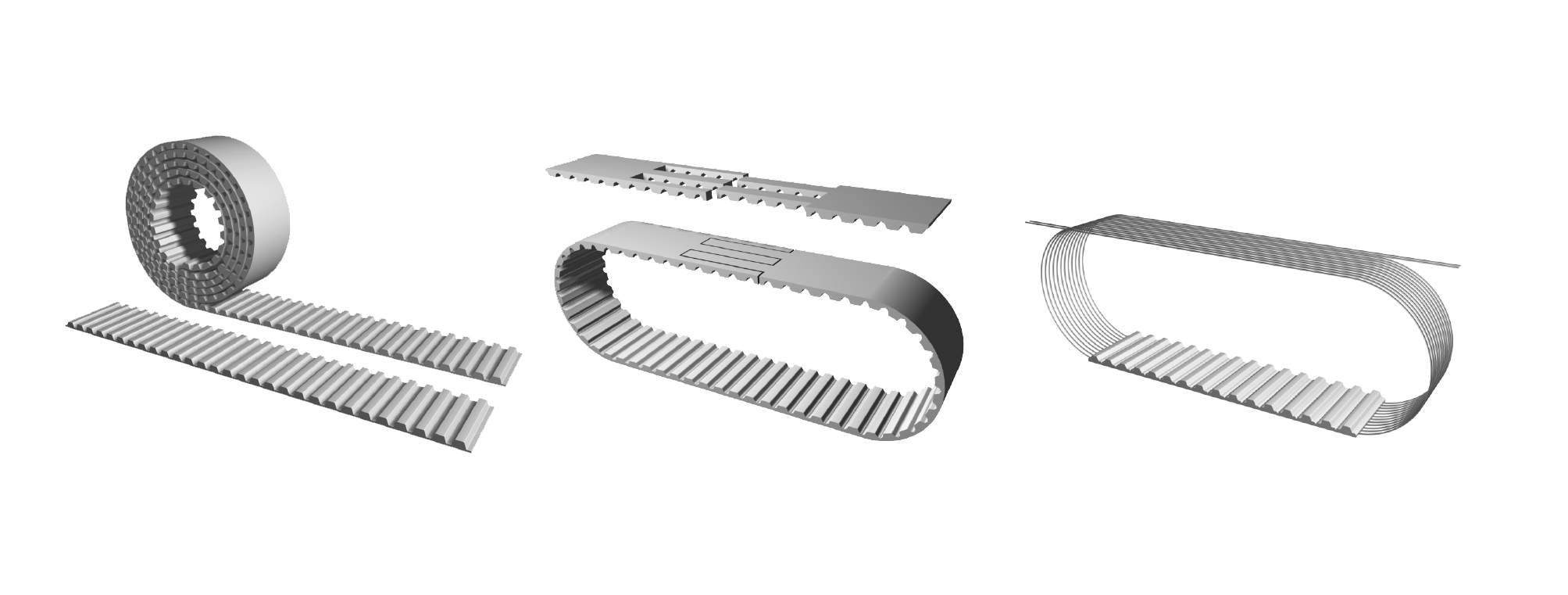
When you think of a timing belt, you probably think of the one in your car that keeps your engine running smoothly. But timing belts are actually found in several places you might not even expect!
Despite being essential in everything from manufacturing your favorite products to powering the printer in your office, many people are unaware of what a timing belt is or what it actually does. Watch the video below to learn more about what timing belts are, or keep reading for an in-depth look.

A timing belt is a type of belt that has teeth on at least one side. Those teeth align perfectly with grooves on pulleys. That precise fit allows the pulleys to move the timing belt without slipping, allowing for consistent, high precision motion.
Timing belts are made of durable materials like polyurethane, neoprene rubber, or nitrile, making them suitable for a wide range of environments and applications. At BRECOflex, we specialize in polyurethane timing belts because of their superior performance and easy customization.
Inside a timing belt you’ll find cords called tension members, which are typically made of materials like carbon steel, stainless steel or Kevlar®. Although you don’t see them, tension members are critical to timing belt performance. They prevent elongation, improve accuracy, and distribute loads evenly across the belts, making them strong and long lasting.

The main job of a timing belt is to transfer motion with precision and efficiency. That function can be applied to several applications, like power transmissions, linear drives, and conveying systems.
Linear drives create back-and-forth motion and rely heavily on accuracy and repeatability. An easy way to visualize a linear drive is thinking of a 3D printer, where a timing belt moves the print head across a straight line to accurately print layers.
You're probably most familiar with conveying applications; just think of any conveyor belt in a factory or an airport! In these systems, timing belts are moved in a loop at a consistent speed, usually to transport objects from one place to another.
In a power transmission drive, timing belts transmit rotational power from one shaft to another. This is especially useful when multiple components need to move in sync. Instead of using an individual motor at each shaft, you can pair one motor with a system of timing belts and pulleys to move them at once.
There are many types of timing belts designed for different needs, depending on factors like load, speed, environment, and accuracy required.

Several industries use timing belts, each one relying on them to complete tasks with efficiency and high precision.
That accuracy is critical, especially in the pharmaceutical industry. You can find timing belts powering pill capsule machines, lining up empty capsules in the exact right spot and the exact right time to be filled. Even a slight misalignment could result in inconsistent dosages within pills, which could be life threating to patients relying on that medication.
Timing belts are also integral to the food industry. Not only do your favorite cookies get moved throughout the factory with timing belts, they get counted and packaged with their help, too. By synchronizing the motion of the conveyor belt with film feed rollers and package cutters, cookies can be properly sealed and made ready for grocery store shelves.
In robotics and automation, timing belts play a crucial role in delivering smooth, coordinated motion. Take a robotic arm as an example. Without timing belts, a servo motor would have to be placed in the arm's joint, limiting its range of motion and increasing moving mass. Instead, timing belts can transfer the motion from a servo motor in a stationary part of the machine, making the arm lighter and far more precise.
These are just a few examples of how different industries can use timing belts. If you look hard enough, you’ll start to see them everywhere!
There are several advantages to using timing belts over other types of drive components, like timing chains. Some of the biggest benefits of using timing belts are:
Depending on your specific application, switching from a chain drive to timing belts could provide substantial benefits. Our Applications Engineering team can help you assess your needs and find the right drive solution.
Because timing belts are so versatile, it can be hard to know where to start when trying to find the right one. BRECOflex is the leader in polyurethane timing belts, with a huge selection of customization options and free engineering support to help you find exactly what you need.
Ready to get the best quality polyurethane timing belt and make your process more reliable? Contact us today.